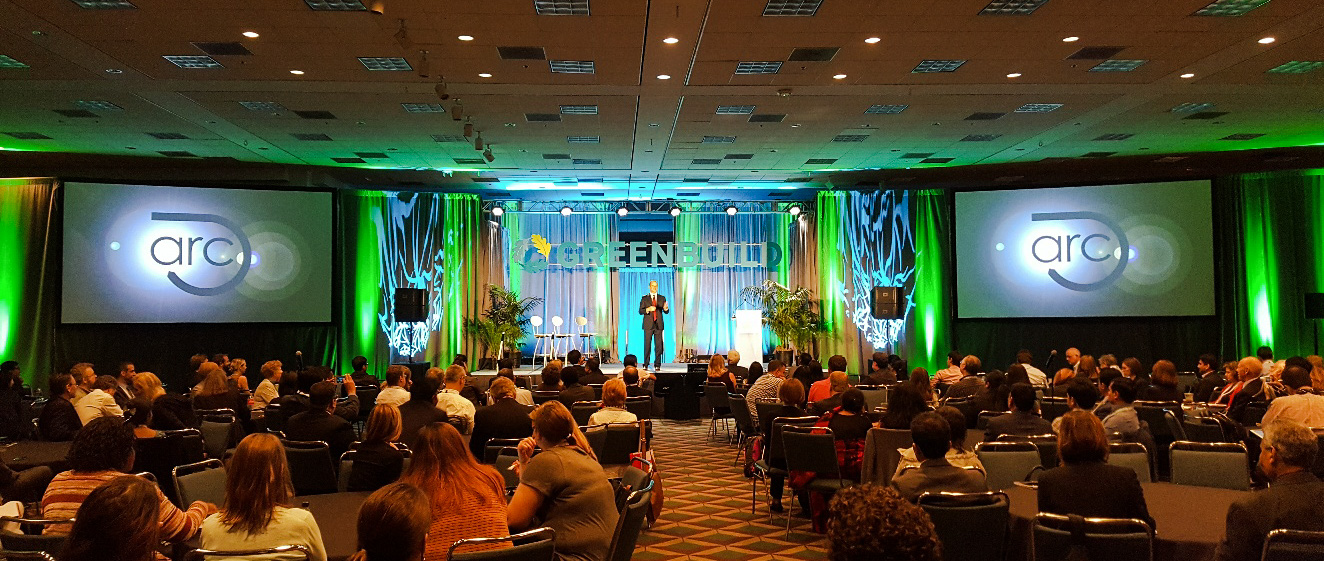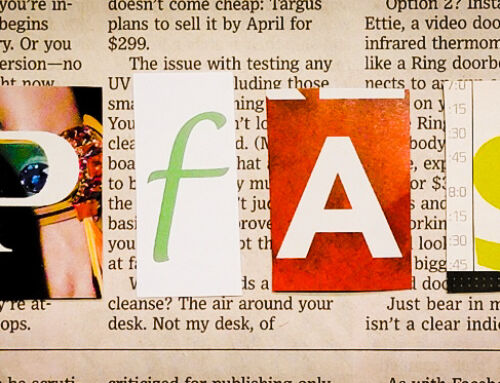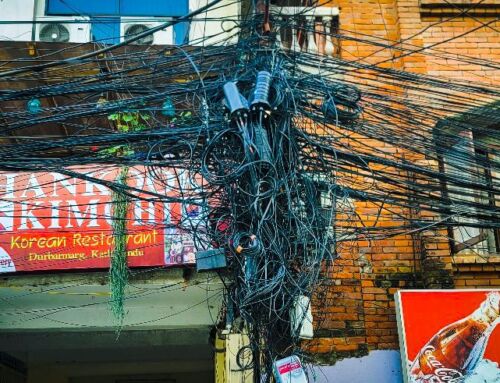View by Topic
Recent Articles
-
EPA Designates PFOA and PFOS as Hazardous Substances under Superfund LawSaturday, April 20th, 2024
-
Federal Government Finalizes New Efficiency Standards for LightbulbsSaturday, April 13th, 2024
-
2024 IECC is Final After Addressing Preemption IssuesSaturday, April 6th, 2024
-
Settlement Portends Broad Failure in Attempts to Ban Natural GasSaturday, March 30th, 2024
-
SEC Climate Disclosure Rule Stay and Venue Now in the 8th CircuitSaturday, March 23rd, 2024
View by Month/Year
“Green Building Law Update” Headlines
Recent Articles & News from
Stuart Kaplow’s blog
at GreenBuildingLawUpdate.com
- EPA Takes Action: PFOA and PFOS Now Hazardous Substances Under Superfund Law April 21, 2024
- Shedding Light on the Future: The Evolution of Lightbulbs in the Wake of New Energy Efficiency Standards April 14, 2024
- 2024 International Energy Conservation Code is Final After Addressing Preemption April 7, 2024
- Settlement Portends Broad Failure in Attempts to Ban Natural Gas March 31, 2024
Subscribe to the Green Building Law Update!
Stuart Kaplow brings his expertise and extensive experience to the table with his unique digital publication, "Green Building Law Update". Subscribers receive regular updates to keep them informed about important issues surrounding Environmental Law, Green Building & Real Estate Law, as well as the emerging demand for Environmental Social Governance (ESG).
Get fresh content through the lense of Stuart Kaplow's cutting-edge expertise, innovative commentary and insider perspective. Don't miss another issue! Subscribe below.

Arc is Electrifying Green Building
Next week will be a year since the launch of Arc. Already approaching a Billion square of projects not only in the United States but also from India to Sweden and Israel to Bhutan, if you are not familiar with the Arc platform, that helps a building owner measure performance and benchmark against others, you are missing out on what is transmogrifying the built environment.
I had an opportunity just days ago to talk with Scot Horst. Scot serves as the CEO of Arc Skoru Inc., the technology company established to build Arc, the digital platform created by the U.S. Green Building Council and its sister organization, the Green Business Certification, Inc.
Previously, Scot was the chief product officer at the USGBC where he oversaw LEED, so he is uniquely qualified to explain Arc’s place in the cacophony of green building standards, codes and ratings systems including its space in the orbit of LEED. While LEED was designed to recognize leadership which has historically been described as the top 25% of the real estate market, “now we can help everyone else make improvements from where they are.”
The Arc platform is not Noah’s ark, the vessel in the Old Testament that saves Noah’s family and the world’s animals from the planetary engulfing flood, but it may only be a modest overstatement to analogize Arc scored existing green buildings saving life as we know it. New construction of green buildings cannot save the planet when less than 170,000 new commercial buildings were constructed in the U.S. last year and that number is all but insignificant given 5.6 million existing U.S. buildings, so eucatastrophic benefit can only be achieved by impacting those millions of existing buildings.
The Arc platform is already casting a huge and growing green shadow over that existing building market.
Those existing buildings participating in the inaugural year of Arc, while in largest number are in the U.S., are across all 7 continents except Antarctica. As we heard from the speakers at Scot Horst’s Master Series session at Greenbuild 2017, they range from schools to airports, from offices to train stations and baseball stadiums to hospitals.
The reason this “system” is having a disruptive impact on hundreds of millions of square feet of existing buildings in less than 12 months, is that while LEED is designed to be about the effort of designing and constructing green building, Arc was created “to focus on the results not the effort.” Put another way, it is “an outcome based standard, not a rules based standard.”
Projects using Arc input data across five categories: Energy, Water, Waste, Transportation and Human Experience. Over time this data will generate a performance score. The data required for Arc includes 12 consecutive months of energy and water use, and a minimum of 1 waste data point, occupant/ transportation survey, and interior carbon dioxide and interior total volatile organic compound levels.
Arc is not a raven-messenger when allows the project to measure improvements and benchmark against itself and other similar projects. A “project” can represent a single standalone building, a group of buildings in a large development or portfolio, or an entire city.
Arc can even be used to send data to GRESB.
There is no Arc “certification.” Arc is a technology platform that offers online tools for buildings to score themselves. There is no plaque, but there is an optional display unit ideal for a building lobby and there is an App so building occupants can track building data real time and be involved.
Arc is available at no charge to LEED registered projects. There is a $1,200 registration fee if a project is not registered with GBCI.
Participation in Arc does satisfy the LEED MPR6 owner’s commitment to share whole building energy and water usage data.
And it is really much more than that. A very large number of LEED Existing Building certified projects did not recertify (.. some could not meet the increasing LEED minimums). And only a very few LEED New Construction certified projects later pursued LEED EB (.. including only a handful that took Rick Fedrizzi up on his Greenbuild offer of some years ago for free certification). Those tranches of building owners are ideal candidates for Arc. And that does not include all of those who are not interested in pursuing third party certification, but will share data so that they can benchmark themselves against other similar buildings. And just maybe, when their score gets close to 40, a building owner might determine it could do a few more things and qualify for LEED certification?
A new and improved LEED v4.1 O+M Building Operations and Maintenance aimed at a larger existing building market share, will be released before the end of 2017 and through piloting available for immediately for use. As I described in my recent blog post, LEED v4.1 Announced by USGBC at Greenbuild, there are still some final decisions to be announced on the much discussed concept of removing prerequisites for O+M projects and the possibility of O+M interior spaces as opposed to the current whole building only. So, it is not Arc in lieu of LEED, but rather Arc complementing LEED.
And Arc building data is already accelerating global market transformation. For example, with 129 registered projects in India, Arc has among the best building performance databases in one of the fastest expanding and high growth real estate markets in the world (.. the construction market in India is expected to grow almost twice as fast as in China).
All of this building data, collected in Arc and other green building rating systems, screams issues of personal data protection and privacy laws not to mention who ‘owns’ the building data and it enormous economic significance. Such will be the subject of my blog post next week.
Industry insiders have predicted that with Arc approaching one billion square of projects in year one, there will be more than 5 billion square feet participating in Arc by this time next year.
Regular readers of this blog may think this post sounds like an endorsement of or testimonial for Arc, and I would respond we are cheerleaders for this system and have been since I first wrote about it a year ago. Just last month in a blog post focusing on the opportunities to green existing buildings, I coauthored with Katie Stanford, we wrote, “Greening the millions of existing buildings, one commercial build out at a time, with .. Arc scored space, can actually save the planet.”
What more can I say, except that you should learn about how Arc will transform your business.









